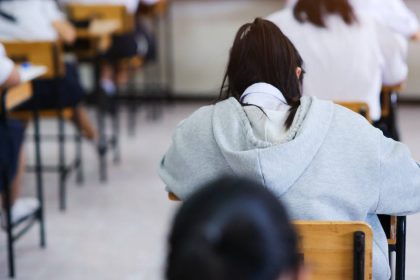An increasing number of secondary school students feel they are under pressure to vape. While only
a growing minority are seen to be trying the worrying habit for the first time, according to the latest
annual survey undertaken by Life Ed with support from the nib foundation, there is a significant
disparity between reality and perception regarding vaping.
In the lead-up to World No Tobacco Day on 31 May, the survey of more than 13,000 students in NSW and SA found that around 50 per cent thought their classmates vaped every week and 20 per cent every month, which was significantly more than was actually the case. 72 per cent of students said they had never vaped, 15 per cent said they rarely or only tried it, eight per cent vaped weekly and five per cent monthly.
According to Life Ed, which is Australia’s largest provider of preventative health education to school
students, this discrepancy presents a crucial opportunity for a nationwide early intervention strategy
to prevent an increase in vaping among young people.
“Understanding that only a small portion of their peers engage in risky behaviours can be a powerful
tool for young people to feel more confident in making positive choices,” says Jonathon Peatfield,
Chief Executive Officer at Life Ed NSW.
Peer pressure motivates risky choices
Despite this, the survey found some concerning trends, with 25 per cent of students saying they felt they
were being pressured to vape, compared to 20 per cent in the previous year. Many parents are unsure how to approach the topic. While three out of four parents (73 per cent) were concerned that their teen might try vapes, the Royal Children’s Hospital (RCH) National Child Health Poll revealed less than half (43 per cent) have talked to their child about it.
In response, Life Ed has launched a suite of video resources designed to empower parents and carers
with the latest research and evidence-based information on vaping, and offer guidance on how to
have meaningful conversations with their dependents about the potential harms that are both
constructive and supportive.
“When parents are equipped with accurate information and practical advice, they can confidently
engage with their children about vaping. This proactive approach not only helps prevent potential
issues but also strengthens family bonds,” says Mr Peatfield.
The new resources offer:
- Clear information on the health impacts and laws of vaping
- Tips for recognising and addressing nicotine addiction
- Strategies for having meaningful and positive conversations with young people
- Guidance on where to find additional support and services
These resources are part of the Reality Now program – a preventative drug and alcohol education program for secondary school students, that has been developed with the support of the nib foundation. The program uses a social norms-based approach to bust the myths around the prevalence of vape use in young people and educate on its negative health impacts.
Nicotine dependence can lead to lifelong issues
nib’s Chief Medical Officer Dr Robert McGrath says the rise in vaping among younger people is alarming, “with many people developing nicotine dependence, which can serve as a gateway to traditional tobacco use, perpetuating the cycle of addiction and increasing the risk of lifelong health issues”.
“Both traditional tobacco cigarettes and e-cigarettes expose users to harmful chemicals. Cigarettes
have been proven to damage nearly every organ in the body, while vapes deliver very similar toxic
chemicals that can lead to similar types of damage and cause irreversible lung damage.”
It takes a village…
Life Ed’s Reality Now program supports teachers and educators too. A suite of syllabus-aligned,
teaching resources extend and reinforce the important learnings after the Reality Now session, back
into the classroom. By working together, parents and educators can ensure that young Australians
have the best possible foundation for a bright future.
“For more than 40 years, in the classroom, we’ve seen how turning challenging conversations into engaging experiences can make a difference,” says Mr Peatfield.
“We’ve also seen how this learning can then contribute to lasting change when the whole community is involved. This collective empowerment is what we are trying to achieve, and we know that parents are the key to ensuring our next generation makes safer and healthier choices.”







